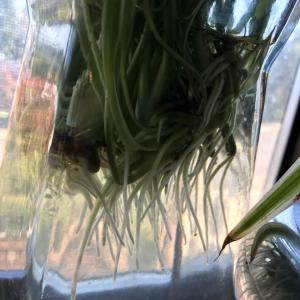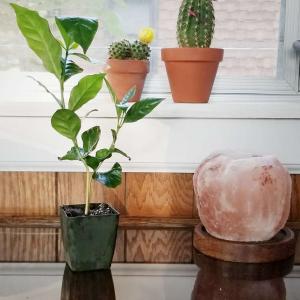求助
lamad
2017年10月07日

I have no idea what any of my succulents are called, im an awful plant mom, please help!
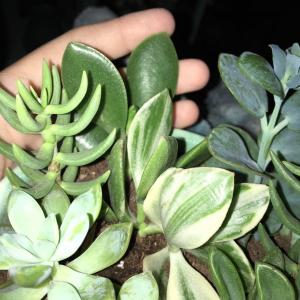
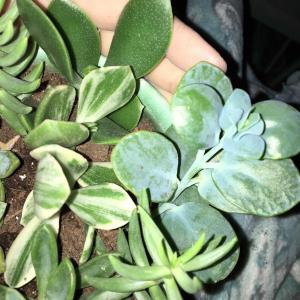
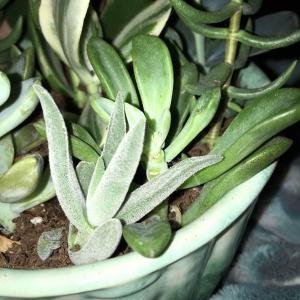
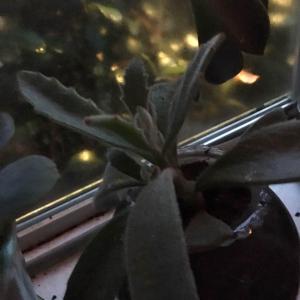

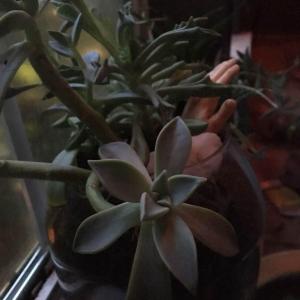
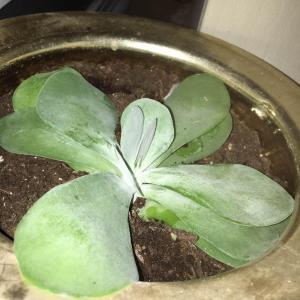

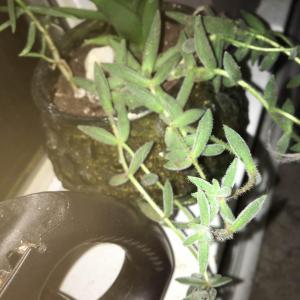









0
0
meriunkat:last column first picture is Kalanchoe Flapjacks
meriunkat:second column first picture is Kalanchoe Tomentosa
成长记
taramisue
2017年10月07日

I new added a "Kalanchoe delagoensis, Chandelier Plant" in my "garden"


0
0
求助
Jodie Hollis
2017年10月06日

Do anyone know this plant


1
0
Ueca:Cotyledon orbiculata oblonga
meriunkat:I have the same plant and I also would like to know the name.. :(
求助
Joseph Bezzina
2017年10月06日

Does anyone has idea the name and type of this plant. if I am not wrong it is found in Libya. Thanks.
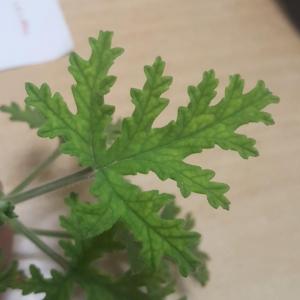

0
0
urbangardener:that is a citronella plant
文章
Dummer. ゛☀
2017年10月02日

Scientific Name
Crassula ovata (Miller) Druce
Common Names
Money Tree, Money Plant, Jade Plant, Jade Tree, Friendship Tree, Lucky Plant, Dollar Plant, Pink Joy
Synonyms
Crassula argentea, Crassula portulacea, Crassula obliqua, Crassula articulata, Crassula nitida, Crassula lucens, Cotyledon ovata, Cotyledon lutea, Toelkenia ovata
Scientific Classification
Family: Crassulaceae
Subfamily: Crassuloideae
Genus: Crassula
Description
Crassula ovata is a large well-branched, compact, rounded, evergreen shrub, up to 6 feet (180 cm) tall with glossy, dark grey-green, oval, succulent leaves and rounded heads of white to pink star-shaped flowers in early spring. The stem is stout and gnarled and gives the impression of great age, and its branches are also short and stubby but well-proportioned. Branches are succulent, grey-green in color and in older specimens the bark peels in horizontal brownish strips. The leaves are up to 2 inches (50 mm) long and up to 1.5 inches (3.8 cm) wide, egg-shaped to elliptic, often with a red margin and a somewhat pointed end. They are in opposite pairs, the one pair arranged at right angles to the next, and they are clustered towards the ends of the branches.
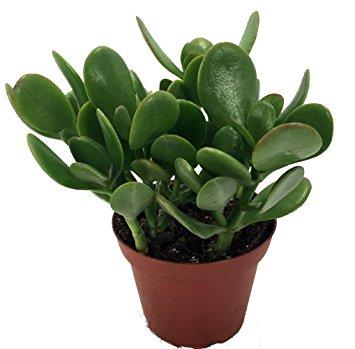
Hardiness
USDA hardiness zone 9b to 11a: from 25 °F (−3.9 °C) to 45 °F (+7.2 °C).
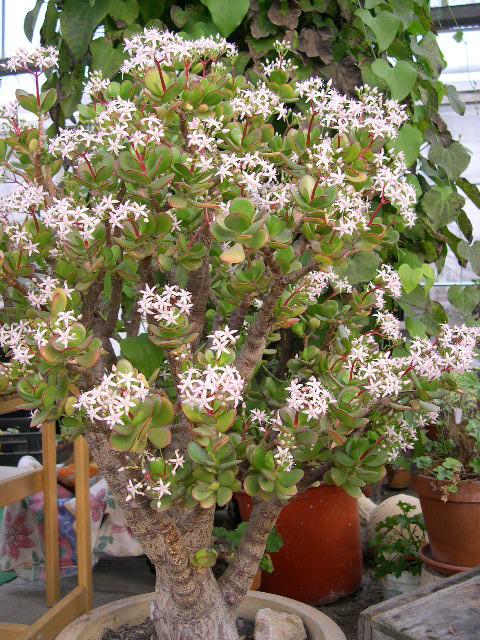
How to Grow and Care
Easy to grow in container, best in full sun but will tolerate part sun. It need well-drained soil with a neutral pH. Water regularly form spring to autumn and allow soil to dry out before watering again. During the winter months, water only enough to keep the leaves from shriveling. Most common reason for failure is overwatering. Propagating is achieved with leaf or stem cuttings which are placed into a soil mix, then wait until they show some growth… – See more at: How to Grow and Care for Jade Plant (Crassula ovata).
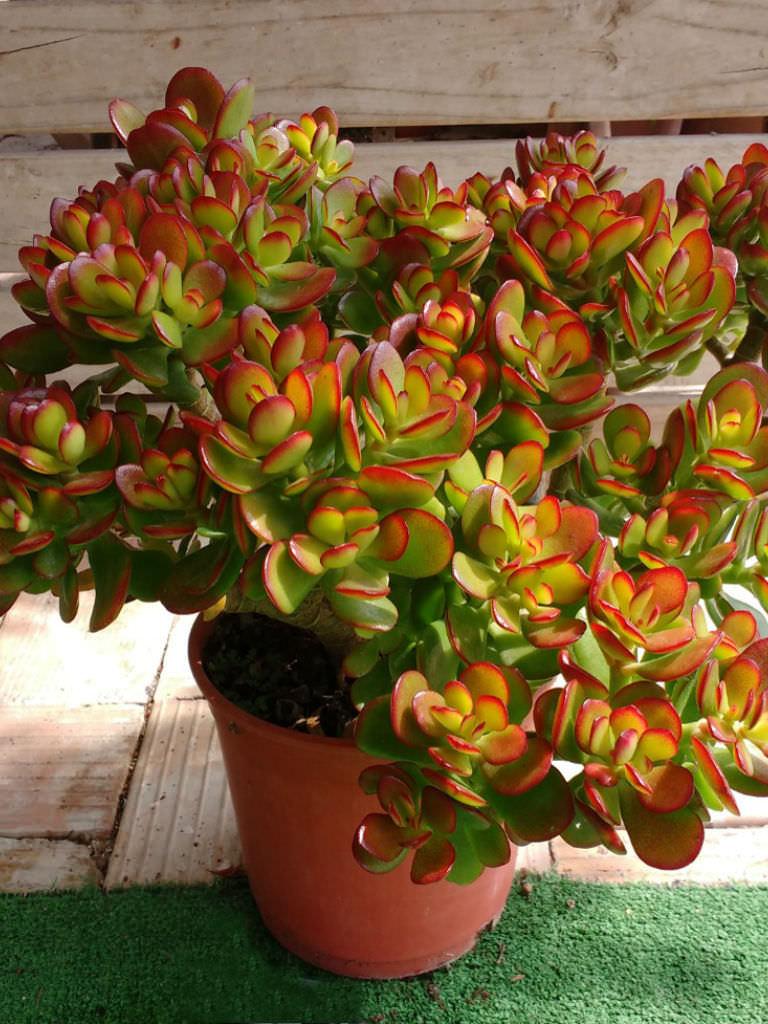
Uses
Crassula ovata is a popular good luck charm in Asia thought to activate financial energies. This beautiful succulent has vibrant green leaves symbolic of growth and renewal, closely resembling jade coins, symbolic of wealth and prosperity. It is a traditional gift for businesses and many business owners place a Jade Plant near the entrance of their restaurants or shops, or in a southeast location to bring prosperity and success… – See more at: Jade Plant for Good Luck, Prosperity and Friendship.
Jade Plant is recommended for warts in folk remedies. A leaf is cut open and the moist flesh is bound over the wart for a series of days. If the treatment is successful, the wart falls off after prolonged exposure. It is also used as a treatment for nausea, and in Africa it is used to treat epilepsy, corns, diarrhea, and to purge the intestines…. – See more at: Uses of Jade Plant in Folk Medicine.
Origin
Native to South Africa and Mozambique.
Crassula ovata (Miller) Druce
Common Names
Money Tree, Money Plant, Jade Plant, Jade Tree, Friendship Tree, Lucky Plant, Dollar Plant, Pink Joy
Synonyms
Crassula argentea, Crassula portulacea, Crassula obliqua, Crassula articulata, Crassula nitida, Crassula lucens, Cotyledon ovata, Cotyledon lutea, Toelkenia ovata
Scientific Classification
Family: Crassulaceae
Subfamily: Crassuloideae
Genus: Crassula
Description
Crassula ovata is a large well-branched, compact, rounded, evergreen shrub, up to 6 feet (180 cm) tall with glossy, dark grey-green, oval, succulent leaves and rounded heads of white to pink star-shaped flowers in early spring. The stem is stout and gnarled and gives the impression of great age, and its branches are also short and stubby but well-proportioned. Branches are succulent, grey-green in color and in older specimens the bark peels in horizontal brownish strips. The leaves are up to 2 inches (50 mm) long and up to 1.5 inches (3.8 cm) wide, egg-shaped to elliptic, often with a red margin and a somewhat pointed end. They are in opposite pairs, the one pair arranged at right angles to the next, and they are clustered towards the ends of the branches.

Hardiness
USDA hardiness zone 9b to 11a: from 25 °F (−3.9 °C) to 45 °F (+7.2 °C).

How to Grow and Care
Easy to grow in container, best in full sun but will tolerate part sun. It need well-drained soil with a neutral pH. Water regularly form spring to autumn and allow soil to dry out before watering again. During the winter months, water only enough to keep the leaves from shriveling. Most common reason for failure is overwatering. Propagating is achieved with leaf or stem cuttings which are placed into a soil mix, then wait until they show some growth… – See more at: How to Grow and Care for Jade Plant (Crassula ovata).

Uses
Crassula ovata is a popular good luck charm in Asia thought to activate financial energies. This beautiful succulent has vibrant green leaves symbolic of growth and renewal, closely resembling jade coins, symbolic of wealth and prosperity. It is a traditional gift for businesses and many business owners place a Jade Plant near the entrance of their restaurants or shops, or in a southeast location to bring prosperity and success… – See more at: Jade Plant for Good Luck, Prosperity and Friendship.
Jade Plant is recommended for warts in folk remedies. A leaf is cut open and the moist flesh is bound over the wart for a series of days. If the treatment is successful, the wart falls off after prolonged exposure. It is also used as a treatment for nausea, and in Africa it is used to treat epilepsy, corns, diarrhea, and to purge the intestines…. – See more at: Uses of Jade Plant in Folk Medicine.
Origin
Native to South Africa and Mozambique.
8
9
老王001:八宝树
文章
Dummer. ゛☀
2017年10月02日

Jade Plant (Crassula ovata) is recommended for warts in folk medicine. A leaf is cut open and the moist flesh is bound over the wart for a series of days. If the treatment is successful, the wart falls off after prolonged exposure.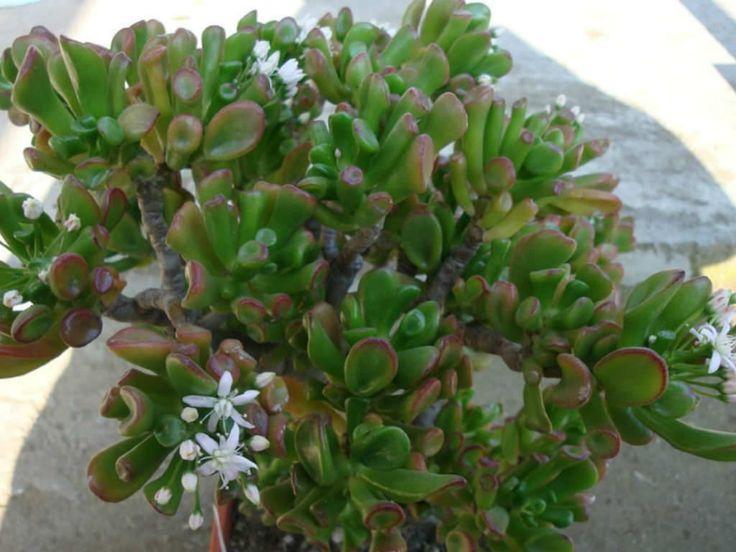
Jade Plant is also used as a treatment for nausea, and in Africa it is used to treat epilepsy, corns, diarrhea, and to purge the intestines. The Khoi and other Africans used the roots for food, grated and cooked, eaten with thick milk. They also used the leaves for medicinal purposes. The leaves were boiled in milk and used to treat epilepsy and corns, as a purgative and as a remedy for diarrhea.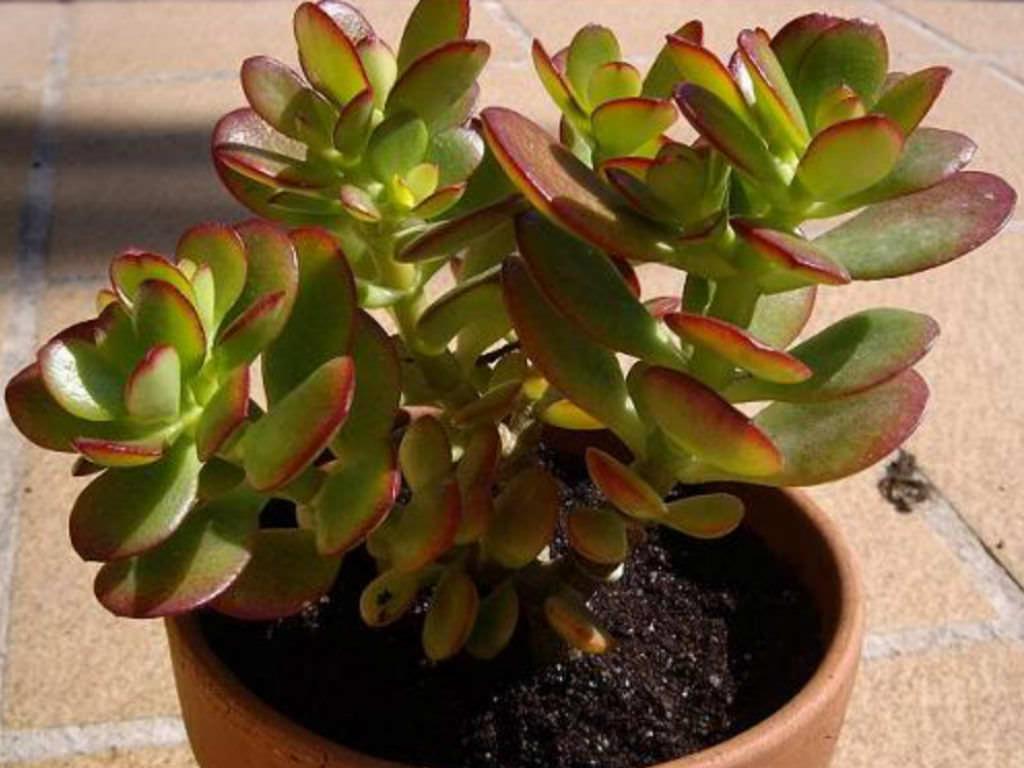
The Feng Shui masters believe that Jade Plants have calming effects.

Jade Plant is also used as a treatment for nausea, and in Africa it is used to treat epilepsy, corns, diarrhea, and to purge the intestines. The Khoi and other Africans used the roots for food, grated and cooked, eaten with thick milk. They also used the leaves for medicinal purposes. The leaves were boiled in milk and used to treat epilepsy and corns, as a purgative and as a remedy for diarrhea.

The Feng Shui masters believe that Jade Plants have calming effects.

1
1
文章
Dummer. ゛☀
2017年10月02日

Hoodia (Hoodia gordonii), which grows in the Kalahari Desert of southern Africa, has been popular in the media lately. For centuries, San Bushmen in the desert have used this plant for fighting off hunger and thirst during long hunts. Other traditional medicinal uses of Hoodia is for cramps, indigestion, hemorrhoids, and improved energy levels.
There are many misunderstandings as to the truth behind Hoodia, starting with its appearance. Though it looks like a cactus, it is in fact a leafless succulent with a cactus-like appearance. Learn the myths and facts behind this rare botanical.
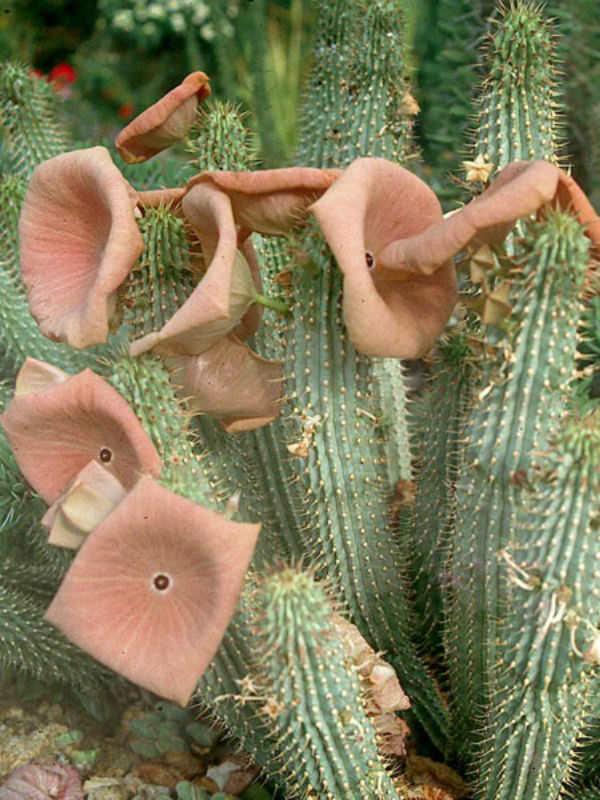
Myth: Makes You Lose Weight
Hoodia supplements claim to make you lose weight fast. Many people turn to Hoodia because they think it is a miracle pill that will shed the pounds, without their having to put any effort.
Fact: It Is an Appetite Suppressant
The real function of Hoodia is its ability to suppress appetite. In fact, the active ingredient, P57, can keep you full for up to 24 hours. If you eat as normal and do not get physical activity, Hoodia will likely do nothing for your weight.
Myth: It Is Suitable for Everyone
Many feel that weight loss supplements are fitting for everyone because they are easily purchasable and widely available. Herbal supplements are thought to be viable for all types of people because they are “natural.” However, there are always those who should take precaution.

Fact: Avoid Under Certain Health Conditions
Though Hoodia can be useful for many people, those with diabetes should steer clear. This is because Hoodia may alert the brain that you have enough blood sugar, and you will not get warning signs that it is dangerously low. This can result in shakiness, irritability, and loss of consciousness.
Also, people with eating disorders should not use Hoodia. Some people turn to Hoodia to suppress appetite even when their eating patterns are perfectly healthy. Also, people who are anorexic may turn to it to aid their desire to skip meals. It is important that eating disorders be treated under the guidance of a doctor.
Myth: All Supplements Are Safe
Just because the packaging looks pretty and welcoming, it does not mean it is safe. In 2011, for example, the United States Food and Drug Administration (FDA) put out an alert that one Hoodia supplement contained sibutramine. This substance was removed from the U.S. market in 2010 due to its possibility for causing heart failure or stroke.

Fact: Find Reliable Retailers
Much of the time, supplement companies have deceiving packaging. Although they claim to be made with natural Hoodia extracts, they may contain little to no Hoodia. Understand that this plant is rare and protected in its native lands. The best way to be sure you are getting a quality product is to look for the C.I.T.E.S. certificate. This verifies that 100% pure South African Hoodia is being used. Even then, however, it may not be clear just how much they are putting in the supplement. If you want to be extra natural, you may also get a Hoodia plant: the San Bushman would eat the meat of the plant directly to get the effects.
Understanding the myths and facts behind new weight loss fads is important. In the case of Hoodia, this knowledge can help you avoid scams and potential danger.
There are many misunderstandings as to the truth behind Hoodia, starting with its appearance. Though it looks like a cactus, it is in fact a leafless succulent with a cactus-like appearance. Learn the myths and facts behind this rare botanical.

Myth: Makes You Lose Weight
Hoodia supplements claim to make you lose weight fast. Many people turn to Hoodia because they think it is a miracle pill that will shed the pounds, without their having to put any effort.
Fact: It Is an Appetite Suppressant
The real function of Hoodia is its ability to suppress appetite. In fact, the active ingredient, P57, can keep you full for up to 24 hours. If you eat as normal and do not get physical activity, Hoodia will likely do nothing for your weight.
Myth: It Is Suitable for Everyone
Many feel that weight loss supplements are fitting for everyone because they are easily purchasable and widely available. Herbal supplements are thought to be viable for all types of people because they are “natural.” However, there are always those who should take precaution.

Fact: Avoid Under Certain Health Conditions
Though Hoodia can be useful for many people, those with diabetes should steer clear. This is because Hoodia may alert the brain that you have enough blood sugar, and you will not get warning signs that it is dangerously low. This can result in shakiness, irritability, and loss of consciousness.
Also, people with eating disorders should not use Hoodia. Some people turn to Hoodia to suppress appetite even when their eating patterns are perfectly healthy. Also, people who are anorexic may turn to it to aid their desire to skip meals. It is important that eating disorders be treated under the guidance of a doctor.
Myth: All Supplements Are Safe
Just because the packaging looks pretty and welcoming, it does not mean it is safe. In 2011, for example, the United States Food and Drug Administration (FDA) put out an alert that one Hoodia supplement contained sibutramine. This substance was removed from the U.S. market in 2010 due to its possibility for causing heart failure or stroke.

Fact: Find Reliable Retailers
Much of the time, supplement companies have deceiving packaging. Although they claim to be made with natural Hoodia extracts, they may contain little to no Hoodia. Understand that this plant is rare and protected in its native lands. The best way to be sure you are getting a quality product is to look for the C.I.T.E.S. certificate. This verifies that 100% pure South African Hoodia is being used. Even then, however, it may not be clear just how much they are putting in the supplement. If you want to be extra natural, you may also get a Hoodia plant: the San Bushman would eat the meat of the plant directly to get the effects.
Understanding the myths and facts behind new weight loss fads is important. In the case of Hoodia, this knowledge can help you avoid scams and potential danger.
1
1
Arianna Moore:Care bears about her
Arianna Moore:cactus Jack hell
Arianna Moore:Duff
文章
Dummer. ゛☀
2017年10月02日

An Aloe vera plant can add a lovely touch of green to any office or home. But did you know that your favorite potted plant could be used for so much more than household decor?

It has been used for medicinal purposes for centuries. Native to North Africa, Southern Europe, and the Canary Islands, today Aloe vera is grown in tropical climates worldwide. From relieving heartburn to slowing the spread of cancer, researchers are only first beginning to unlock all of the powerful uses of this universal plant and its many amazing byproducts.
1. Your houseplant could fight your heartburn. Gastroesophageal reflux disease (GERD) is a digestive disorder that often results in symptoms including heartburn. A recent review explains that consuming 1 to 3 onces of Aloe vera gel at mealtimes could reduce the severity of GERD and other digestion-related problems. The plant’s low toxicity makes it a safe and gentle remedy.
2. A little Aloe vera gel a day could keep bacteria on fruits and vegetables away. In a recent study, an Aloe vera gel coating on tomato plants was able to block, not all, but many types of harmful bacteria. Similar results were found in a different study with apples. This means that Aloe vera gel could help produce stay fresh for longer without the need for potentially dangerous chemicals.
3. An alternative to mouthwash. A 2014 study found Aloe vera extract to be a safe and effective alternative to chemical-based mouthwashes. The plant’s natural ingredients, which include a healthy dose of vitamin C, can block plaque and also provide relief if you have bleeding or swelling gums.
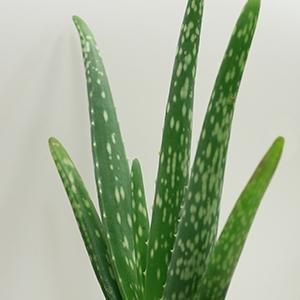
4. The new blood sugar regulator is greener than ever. Might Aloe vera be able to help people with diabetes regulate their blood sugar levels? One study conducted in Thailand found that two tablespoons of Aloe vera juice per day caused blood sugar levels to fall in people with type 2 diabetes, which means it may have a future in diabetes treatment. These results were confirmed with a later study from Turkey that used pulp extract.
5. A little extra push. Recently, a team of Nigerian scientists conducted a study to determine whether local folklore about Aloe vera was true. Experimenting on rats, they found that gel made from typical Aloe vera houseplants was able to relieve constipation.
6. Brighten more than just your office space. You can use it to keep your skin clear and hydrated. According to a study, the plant is particularly special because it’s designed to live in dry, unstable climates. To survive, the leaves of Aloe vera store water. The combination of the moist leaf and special plant compounds called complex carbohydrates make it an effective face moisturizer and pain reliever.
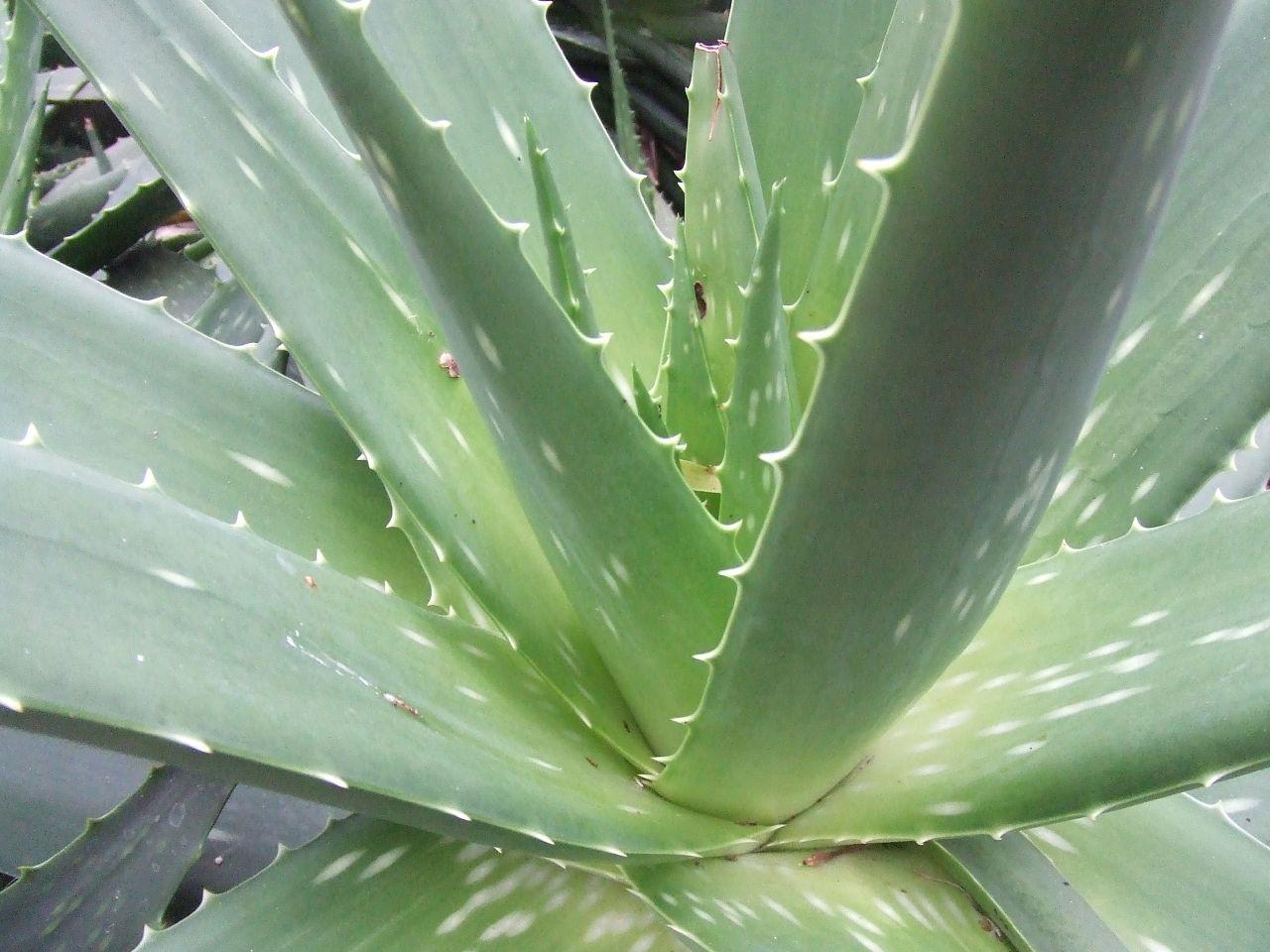
7. Stepping up in the battle against cancer. According to a new study, aloe-emodin, a compound in Aloe vera leaves, could slow down the spread of breast cancer cells. Researchers are currently investigating how it may play a role in other types of cancer, as well.
There are hundreds of ways to use the Aloe vera plant and the various gels and extracts that can be made from it. Researchers are continuing to discover new ways to put this natural superpower to use. The next time you are looking for an effective remedy or just a new houseplant, consider Aloe vera.

It has been used for medicinal purposes for centuries. Native to North Africa, Southern Europe, and the Canary Islands, today Aloe vera is grown in tropical climates worldwide. From relieving heartburn to slowing the spread of cancer, researchers are only first beginning to unlock all of the powerful uses of this universal plant and its many amazing byproducts.
1. Your houseplant could fight your heartburn. Gastroesophageal reflux disease (GERD) is a digestive disorder that often results in symptoms including heartburn. A recent review explains that consuming 1 to 3 onces of Aloe vera gel at mealtimes could reduce the severity of GERD and other digestion-related problems. The plant’s low toxicity makes it a safe and gentle remedy.
2. A little Aloe vera gel a day could keep bacteria on fruits and vegetables away. In a recent study, an Aloe vera gel coating on tomato plants was able to block, not all, but many types of harmful bacteria. Similar results were found in a different study with apples. This means that Aloe vera gel could help produce stay fresh for longer without the need for potentially dangerous chemicals.
3. An alternative to mouthwash. A 2014 study found Aloe vera extract to be a safe and effective alternative to chemical-based mouthwashes. The plant’s natural ingredients, which include a healthy dose of vitamin C, can block plaque and also provide relief if you have bleeding or swelling gums.

4. The new blood sugar regulator is greener than ever. Might Aloe vera be able to help people with diabetes regulate their blood sugar levels? One study conducted in Thailand found that two tablespoons of Aloe vera juice per day caused blood sugar levels to fall in people with type 2 diabetes, which means it may have a future in diabetes treatment. These results were confirmed with a later study from Turkey that used pulp extract.
5. A little extra push. Recently, a team of Nigerian scientists conducted a study to determine whether local folklore about Aloe vera was true. Experimenting on rats, they found that gel made from typical Aloe vera houseplants was able to relieve constipation.
6. Brighten more than just your office space. You can use it to keep your skin clear and hydrated. According to a study, the plant is particularly special because it’s designed to live in dry, unstable climates. To survive, the leaves of Aloe vera store water. The combination of the moist leaf and special plant compounds called complex carbohydrates make it an effective face moisturizer and pain reliever.

7. Stepping up in the battle against cancer. According to a new study, aloe-emodin, a compound in Aloe vera leaves, could slow down the spread of breast cancer cells. Researchers are currently investigating how it may play a role in other types of cancer, as well.
There are hundreds of ways to use the Aloe vera plant and the various gels and extracts that can be made from it. Researchers are continuing to discover new ways to put this natural superpower to use. The next time you are looking for an effective remedy or just a new houseplant, consider Aloe vera.
2
2
文章
Dummer. ゛☀
2017年10月02日

The juice made from the Agave plant contains estrogen-like isoflavonoid, alkaloids, coumarin and vitamins B1, B2, C, D and K, and provitamin A.
Agave americana has antiseptic, wound-healing and anti-inflammatory properties, which explain its uses externally as a medicinal herb to treat burns, bruises, minor cuts, injuries and skin irritation caused by insect bites. In Central America the juice from the Agave plant has, for a long time, been used as a treatment for wounds. The Aztecs and Mayans used Agave juice and egg whites to make a poultice that was then laid on wounds to speed healing.

Traditionally, it was used internally to treat ulcers, stomach inflammation, tuberculosis, jaundice and other liver diseases, syphilis and menstrual problems. Additionally it is used as a treatment for high fever by inducing sweat. A poultice made from the root and the leaves is often used to treat toothache.
Agave americana was used as an herbal remedy for weak digestion, intestinal gas and constipation. The juice has antibacterial properties and can be used internally to control the growth of decay bacteria in the stomach and intestines. Although Agave seems like a laxative, the herb can also be used as a treatment for diarrhea and dysentery. This medicinal herb is the source for hecogenin, a compound used in the production of many steroidal drugs.

Agave is also a food source. The flower stalks and the base leafs of Agave americana can be roasted and consumed. A sweet juice which is tapped from the flower stalks, can be drunk or used to make an alcoholic beverage such as pulque. Other Agave species are also used to make traditional alcoholic drinks such as mescal and tequila, which is made from Agave angustifolia and Agave salmiana. The leaves from both Agave americana and the Sisal Agave (Agave sisalana) are used to make woven mats and also to make paper. The sharp thorns at the tip of the leaves of Agave americana also serve as needles and nails.
An extract of the leaves or the roots is used to make soap. The plant contains saponins, which can form a lather in water that’s sometimes effective for cleaning. The leaves or roots are cut into small pieces and then simmered in water to extract the saponins.

Possible Side Effects and Interactions
Pregnant women should not use Agave americana internally. Large quantities of the herb can irritate the digestive system and even cause liver damage. The plant can trigger allergic reaction in some people and cause irritation and rashes. Caution is advised when the herb is collected and handled due to the sharp blades at the tip of the leaves.
Agave americana has antiseptic, wound-healing and anti-inflammatory properties, which explain its uses externally as a medicinal herb to treat burns, bruises, minor cuts, injuries and skin irritation caused by insect bites. In Central America the juice from the Agave plant has, for a long time, been used as a treatment for wounds. The Aztecs and Mayans used Agave juice and egg whites to make a poultice that was then laid on wounds to speed healing.

Traditionally, it was used internally to treat ulcers, stomach inflammation, tuberculosis, jaundice and other liver diseases, syphilis and menstrual problems. Additionally it is used as a treatment for high fever by inducing sweat. A poultice made from the root and the leaves is often used to treat toothache.
Agave americana was used as an herbal remedy for weak digestion, intestinal gas and constipation. The juice has antibacterial properties and can be used internally to control the growth of decay bacteria in the stomach and intestines. Although Agave seems like a laxative, the herb can also be used as a treatment for diarrhea and dysentery. This medicinal herb is the source for hecogenin, a compound used in the production of many steroidal drugs.

Agave is also a food source. The flower stalks and the base leafs of Agave americana can be roasted and consumed. A sweet juice which is tapped from the flower stalks, can be drunk or used to make an alcoholic beverage such as pulque. Other Agave species are also used to make traditional alcoholic drinks such as mescal and tequila, which is made from Agave angustifolia and Agave salmiana. The leaves from both Agave americana and the Sisal Agave (Agave sisalana) are used to make woven mats and also to make paper. The sharp thorns at the tip of the leaves of Agave americana also serve as needles and nails.
An extract of the leaves or the roots is used to make soap. The plant contains saponins, which can form a lather in water that’s sometimes effective for cleaning. The leaves or roots are cut into small pieces and then simmered in water to extract the saponins.

Possible Side Effects and Interactions
Pregnant women should not use Agave americana internally. Large quantities of the herb can irritate the digestive system and even cause liver damage. The plant can trigger allergic reaction in some people and cause irritation and rashes. Caution is advised when the herb is collected and handled due to the sharp blades at the tip of the leaves.
0
0
文章
Dummer. ゛☀
2017年10月02日

The Agave lechuguilla (Lechuguilla) is the smallest Agave growing in the Trans-Pecos area of the Chihuahuan Desert. Its leaves are usually less than an inch wide and the plant ranges from 12 to 18 inches in height. Though sometimes listed as an indicator species of the Chihuahuan, that is not strictly the case, as this plant can also be found in the Sonoran and Coahuilan deserts as well. It is the dominant plant species on over 38,000 square miles of calcareous soils that are of little use for anything else.

Lechuguilla frequently grows in almost impenetrable thickets, and its stiff, inwardly curved spines are capable of piercing skin, leather, and even off-road vehicle tires. If you’ve ever stepped in one you understand first-hand how the curvature of the spine helps it dig deep into your calf; how its backwardly aimed side spines make it difficult to get free, and how its deep puncture wounds hurt like the dickens and can take months to heal. These spines can cripple a horse and severely injure any human who happens to fall upon it. If there is one plant in the Chihuahuan desert to avoid, this is it.
But Lechuguilla is not all bad. Like its other Agave brethren, it stays green year round. When it’s old enough it sends up a flower stalk that rises 10 to 15 feet; it is covered with lovely wine and yellow colored flowers.
Since the flowering stalk is so tall, you may spend quite a bit of time visiting the Chihuahuan Desert without seeing the small flowers which create this display.
Lechuguilla, as much as any other plant in the Trans Pecos, gives our area the look that tells us this is home. When it is in bloom Lechuguilla hosts countless pollinating insects, including the Cohuila Giant Skipper that is entirely dependent on this plant. After flowering, the remaining stalk is one of the few viable alternatives to wood to be found in the Chihuahuan desert.

Lechuguilla has been used for food, drink, and fiber for over 10,000 years. The toxic juices have been used as an arrow poison, a fish stupefier, a medicine, and a soap. Aztecs made a powerful antibiotic from a mixture of Lechuguilla juice and salt and used it as a dressing for wounds and a balm for skin infections. The Mescalero Apaches baked the central stems in pits and then rolled out the pulp, dried it and stored it as a sort of sweat bread. They also fermented the pulp to make an alcoholic drink that is made today and sold in Mexico as “Clandestino”. The water stored in the leaves is rich in salts and minerals and is sold as a sports drink.

People have always valued lechuguilla for its fiber. Its leaves are so thick with fiber that it is difficult to see how the plant stores anything else inside. The fibers are long, tough, resilient, strong, and extremely durable. Native Americans fashioned lechuguilla fibers into sandals, baskets, nets, rugs, cordage and a wide range of other products. Lechuguilla sandals have been recovered from numerous rock shelters in the eastern Trans-Pecos.

Lechuguilla frequently grows in almost impenetrable thickets, and its stiff, inwardly curved spines are capable of piercing skin, leather, and even off-road vehicle tires. If you’ve ever stepped in one you understand first-hand how the curvature of the spine helps it dig deep into your calf; how its backwardly aimed side spines make it difficult to get free, and how its deep puncture wounds hurt like the dickens and can take months to heal. These spines can cripple a horse and severely injure any human who happens to fall upon it. If there is one plant in the Chihuahuan desert to avoid, this is it.
But Lechuguilla is not all bad. Like its other Agave brethren, it stays green year round. When it’s old enough it sends up a flower stalk that rises 10 to 15 feet; it is covered with lovely wine and yellow colored flowers.
Since the flowering stalk is so tall, you may spend quite a bit of time visiting the Chihuahuan Desert without seeing the small flowers which create this display.
Lechuguilla, as much as any other plant in the Trans Pecos, gives our area the look that tells us this is home. When it is in bloom Lechuguilla hosts countless pollinating insects, including the Cohuila Giant Skipper that is entirely dependent on this plant. After flowering, the remaining stalk is one of the few viable alternatives to wood to be found in the Chihuahuan desert.

Lechuguilla has been used for food, drink, and fiber for over 10,000 years. The toxic juices have been used as an arrow poison, a fish stupefier, a medicine, and a soap. Aztecs made a powerful antibiotic from a mixture of Lechuguilla juice and salt and used it as a dressing for wounds and a balm for skin infections. The Mescalero Apaches baked the central stems in pits and then rolled out the pulp, dried it and stored it as a sort of sweat bread. They also fermented the pulp to make an alcoholic drink that is made today and sold in Mexico as “Clandestino”. The water stored in the leaves is rich in salts and minerals and is sold as a sports drink.

People have always valued lechuguilla for its fiber. Its leaves are so thick with fiber that it is difficult to see how the plant stores anything else inside. The fibers are long, tough, resilient, strong, and extremely durable. Native Americans fashioned lechuguilla fibers into sandals, baskets, nets, rugs, cordage and a wide range of other products. Lechuguilla sandals have been recovered from numerous rock shelters in the eastern Trans-Pecos.
0
0







